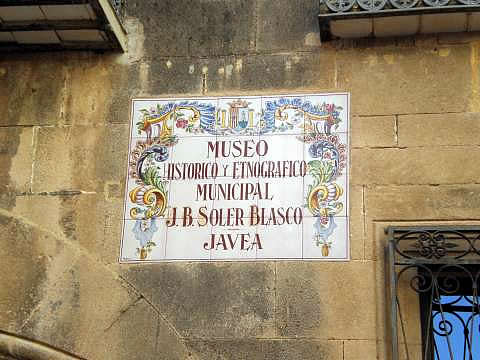|
The Castle of Ocaive is located to the south-west of the town of Pedreguer, within its municipal area, on top of a crag at the foot of the "muntanya gran" a place with an important natural defence. It features an impressive vertical wall on the north and west faces. Although The site was occupied during the Bronze Age and Iberian period, the architectural structures found at its highest point date from Medieval times (13th-14th centuries). These consist of the remains of a quadrangular tower with a vaulted base and several rooms. On a lower level towards the east, there are the remains of a large rectangular cistern, built on the edge of the “albacar” (lower enclosure) from the Islamic period (12th-13th centuries).The views from the castle are impressive, showing its strategic location for the control of the territory. The castle of l´Ocaive (or Olocaiba in medieval documents) was the central element of a castral district that comprised approximately the current district of Pedreguer and part of that of Gata de Gorgos, in which there were several farmhouses that depended on the fortification for military and administrative purposes.
Archaeological excavations were carried out in 2018 and 2019. Subsequently some of the architectural structures were consolidated and restored. All These works have been possible thanks to investment by the Pedreguer Town Council and a grant from the ERDF Operational Programme 2014-2020 (2018/8193), of the European Union.
0 Comments
In the second half of the 19th century, economic activity in Xàbia and the Marina Alta centred mainly on the production and export of raisins. The situation changed with the advent of the 20th century. In the early years of the new century, the Phylloxera plague spread throughout the region and the raisin sector went into crisis. At that time, part of the local population was forced to emigrate to Algeria in order to find work. There, in that region of North Africa, the men from the Marina Alta worked mainly in the fields while the women were principally employed as wet nurses and child minders.
Economic reasons were not the only motivations for emigration to Algeria. As the Spanish Civil War neared its end, hundreds of people were forced to flee to the then French colony because of their political ideas. Despite political and racial tensions, Christians and Muslims, French, Valencians and Algerians lived side by side in Algeria. This ethnic mix gave rise to a peculiar language, the patuet. This language had words referring to food, clothing and work relating to the countryside. Some of these words such as "sicató" (pruning shears) have survived to the present day thanks to the people who returned to the Marina Alta following the independence of the North African country in 1962. |
ACTIVITIES
Categories |
- Home
- Blogs
-
Projectes
- Premio de Investigación - Formularios de Inscripción
-
Traducciones Translations
>
-
DISPLAY PANELS - GROUND FLOOR
>
- THE STONE AGES - PALAEOLITHIC, EPIPALAEOLITHIC AND NEOLITHIC
- CAVE PAINTINGS (ARTE RUPESTRE)
- CHALCOLITHIC (Copper) & BRONZE AGES
- THE IBERIAN CULTURE (THE IRON AGE)
- THE IBERIAN TREASURE OF XÀBIA
- THE ROMAN SETTLEMENTS OF XÀBIA
- THE ROMAN SITE AT PUNTA DE L'ARENAL
- THE MUNTANYAR NECROPOLIS
- ARCHITECTURAL DECORATIONS OF THE PUNTA DE L'ARENAL
- THE ATZÚBIA SITE
- THE MINYANA SMITHY
- Translations archive
- Quaderns: Versión castellana >
- Quaderns: English versions >
-
DISPLAY PANELS - GROUND FLOOR
>
- Catálogo de castillos regionales >
- Exposició - Castells Andalusins >
- Exposición - Castillos Andalusíes >
- Exhibition - Islamic castles >
- Sylvia A. Schofield - Libros donados
- Mejorar la entrada/improve the entrance >
-
Historia y enlaces
-
Historía de Xàbia
>
- Els papers de l'arxiu, Xàbia / los papeles del archivo
- La Cova del Barranc del Migdia
- El Vell Cementeri de Xàbia
- El Torpedinament del Vapor Germanine
- El Saladar i les Salines
- La Telegrafía y la Casa de Cable
- Pescadores de Xàbia
- La Caseta de Biot
- Castell de la Granadella
- La Guerra Civil / the Spanish civil war >
- History of Xàbia (English articles) >
- Charlas y excursiones / talks and excursions >
- Investigacions del museu - Museum investigations
- Enllaços
- Enlaces
- Links
-
Historía de Xàbia
>
- Social media
- Visitas virtuales
- Tenda Tienda Shop


 RSS Feed
RSS Feed
